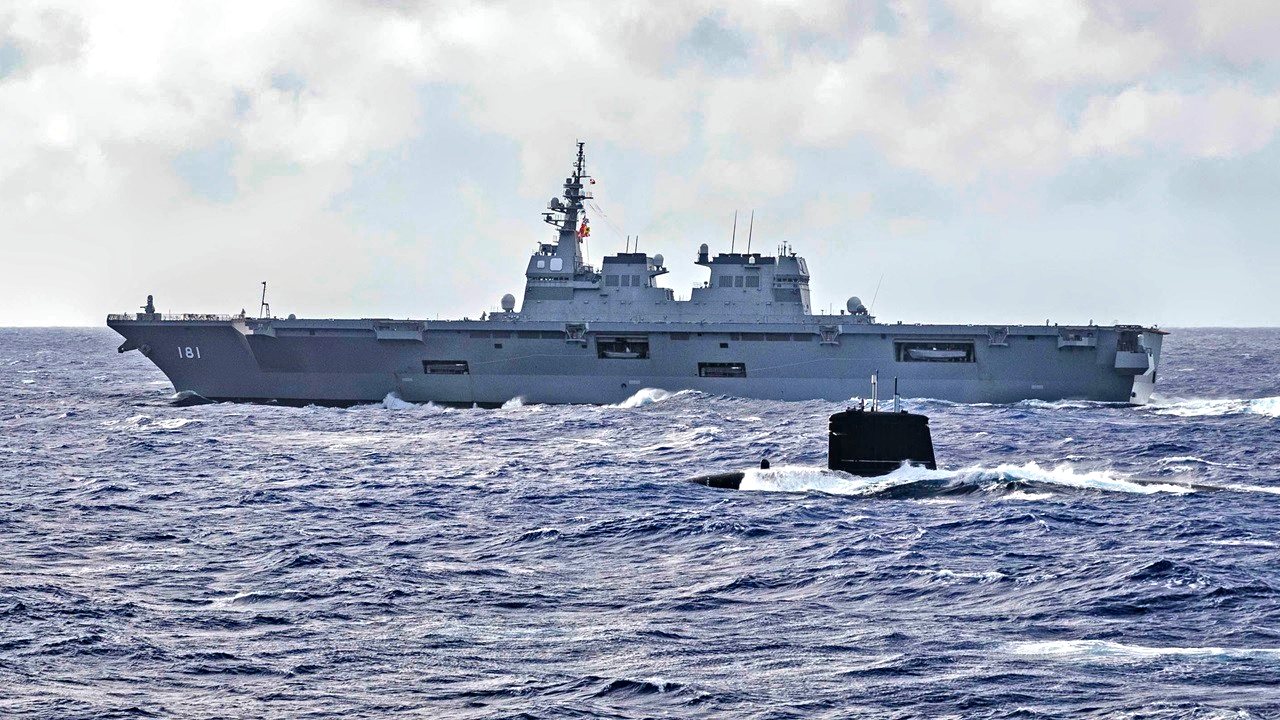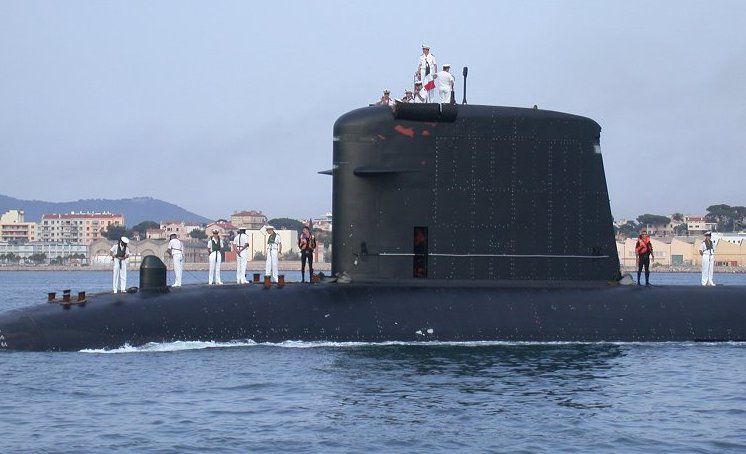Rubis: The Small French Submarine That Sank A Navy Aircraft Carrier in a Wargame
Although details of how the Saphir - a Rubis-class submarine - was able to detect and attack Theodore Roosevelt quietly remain a mystery, the French submarine was successful in slipping into the Nimitz-class carrier’s defensive screen while avoiding detection by ASW assets.
Meet the Rubis-Class Submarines from France: While the U.S. Navy’s fleet of aircraft carriers are considered to be some of the most formidable ships in the sea, they are certainly not impervious to attacks.
As “floating airports,” these types of vessels are integral in the modern war space.
Navies began using carriers to launch airframes more heavily in the Second World War. During the early stages of the war, the Japanese attacked Pearl Harbor by carrier-based airframes, demonstrating just how mighty these ships could be.
Following this incident, the U.S. prioritized the development and modernization of its own carrier programs. Today, the Nimitz and Ford-class carriers lead the Navy’s sea-based operations. Although the Nimitz-class ships are considering to be top-of-the-line by military experts and analysts alike, they are not immune to all lines of fire.
Rubis-Class: A French submarine sank a U.S. warship in a military drill
In March 2015, the French Ministry of Defense released a report detailing how one of its nuclear-powered attack submarines (SSN) pretended to sink one of the U.S. Navy’s Nimitz-class ships in a joint exercise in the North Atlantic.
According to the details revealed, the joint military drills comprised of several imaginary states threatening the USS Theodore Roosevelt.
During the first day of the exercise, the French Rubis-class submarine Saphir was integrated into the friendly force and aided the U.S. Navy’s P-3C Orion and P-8A Poseidon Maritime Patrol Aircraft. By day two, the French vessel joined the adversarial team, tasked with the mission to locate the American carrier and its accompanying warships and prepare to attack.
Although details of how the Saphir was able to detect and attack Theodore Roosevelt quietly remain a mystery, the French submarine was successful in slipping into the Nimitz-class carrier’s defensive screen while avoiding detection by ASW assets.
Meet the Rubis-Class
The Saphir is one of the French Navy’s Rubis-class nuclear-powered submarines. Back in the early 1960s, this class was set to enter its construction phase, but it was canceled by the end of the decade.
However, by 1972, a new naval plan was conceptualized that called for the production of 20 attack submarines of both nuclear and conventionally powered types.
The project was ultimately brought to fruition, and the second-attempt Rubis-class submarines entered service with the French Navy.

Smaller than their foreign counterparts, these ships were fitted with a more compact hull design. In fact, the resulting SNA72 class built at Cherbourg is the smallest nuclear-powered type submarine in operational service with any navy across the globe. The 48-megawatt integrated reactor-heat exchanger designed by French engineers has a service live of 7 years before refill. As detailed byMilitary Today, the hull depth of these submarines was actually greater than its Agosta-class predecessors and has enabled the typical three-deck layout of bigger submarines to be used for the areas forward of the fin.
The Rubis-class: specs and capabilities
While the Rubis-class ships were sophisticated on paper, the initial design of the premiere submarine in the class proved to be quite noisy.
Since submarines are intended to avoid detection by enemy warships, this flaw was serious. Ultimately, the hull was reshaped and lengthened to help reduce noise emissions. The first Rubis submarine was commissioned in 1983, followed by the Saphir in 1984, the Casabianca in 1987, the Emeraude in 1988, the Amethyste in 1992, and the Perle in 1993. Two additional submarines, the Turquoise, and the Diamant, were canceled in the early 1990s before entering their construction phases.

The Rubis-Class Is a Powerhouse
In terms of armaments, the Rubis-class submarines can pack a punch. Each ship’s weapon control system is the DLA 2B and the DLA 3. As explained by Naval Technology, the torpedo tube-launched Exocet SM39 anti-ship missile can approach a target area in a sea-skimming mode using both active radar homing and inertial navigation.
Each submarine also has the ability to carry up to 14 missiles and torpedoes in a mixed load.
The Rubis-class ships also use the Thales DR 3000U electronic support measures system, which complements other sensors on board, including the Rubis Amethyste’s Type 1007 navigation radar.
Maya Carlin is an analyst with the Center for Security Policy and a former Anna Sobol Levy Fellow at IDC Herzliya in Israel. She has by-lines in many publications, including The National Interest, Jerusalem Post, and Times of Israel. You can follow her on Twitter: @MayaCarlin.
All images are from Shutterstock (main image) or Creative Commons.


